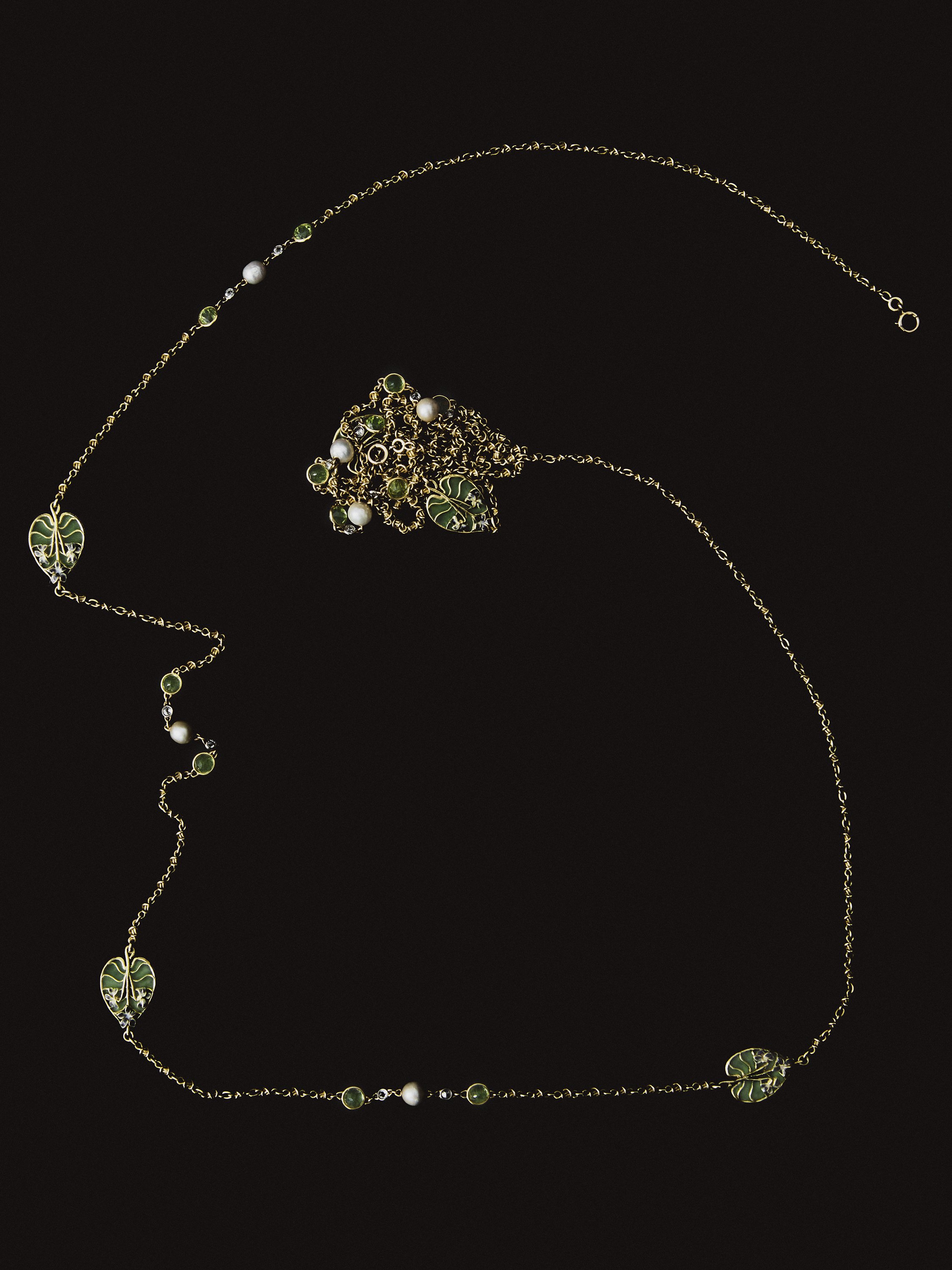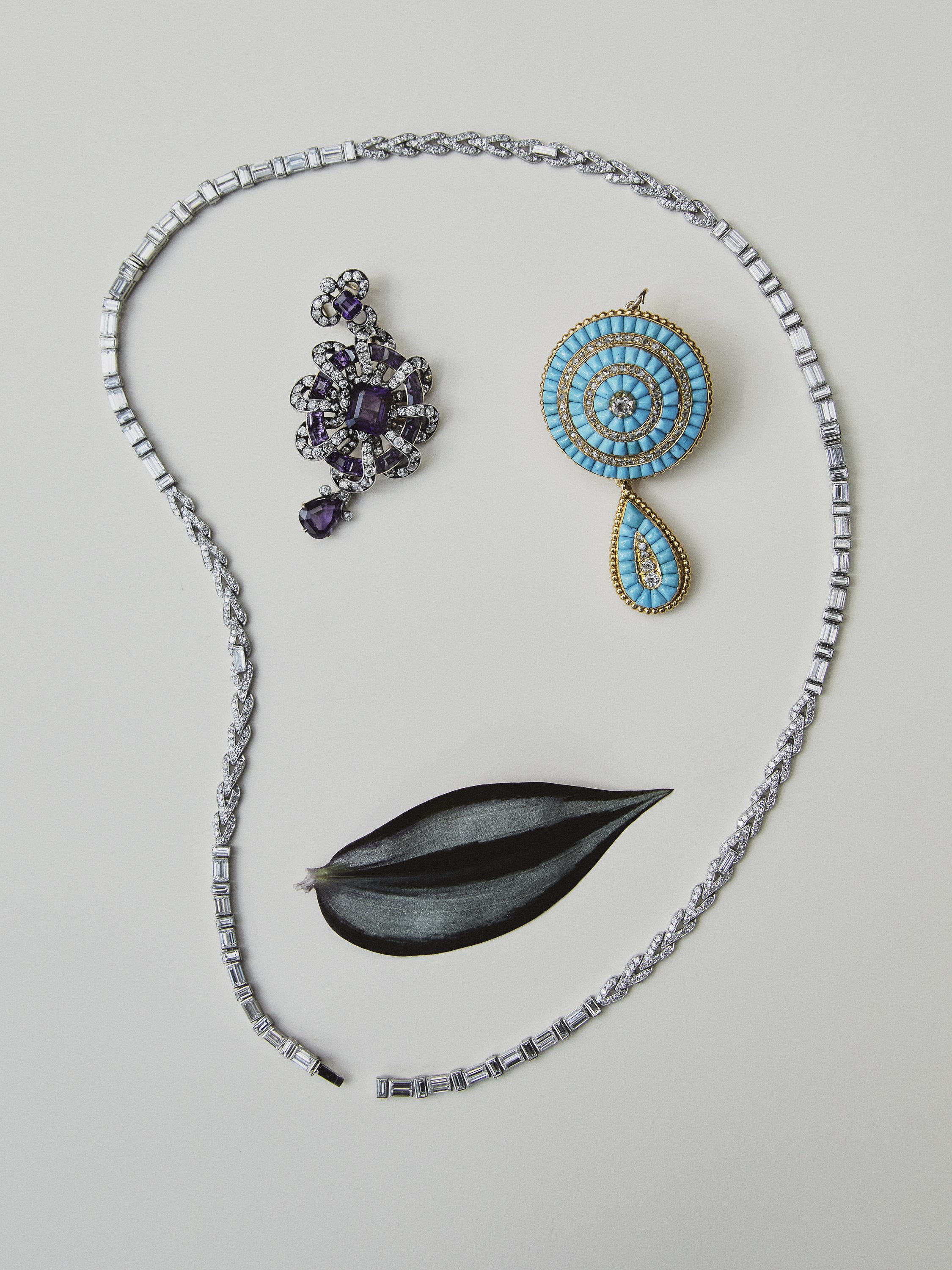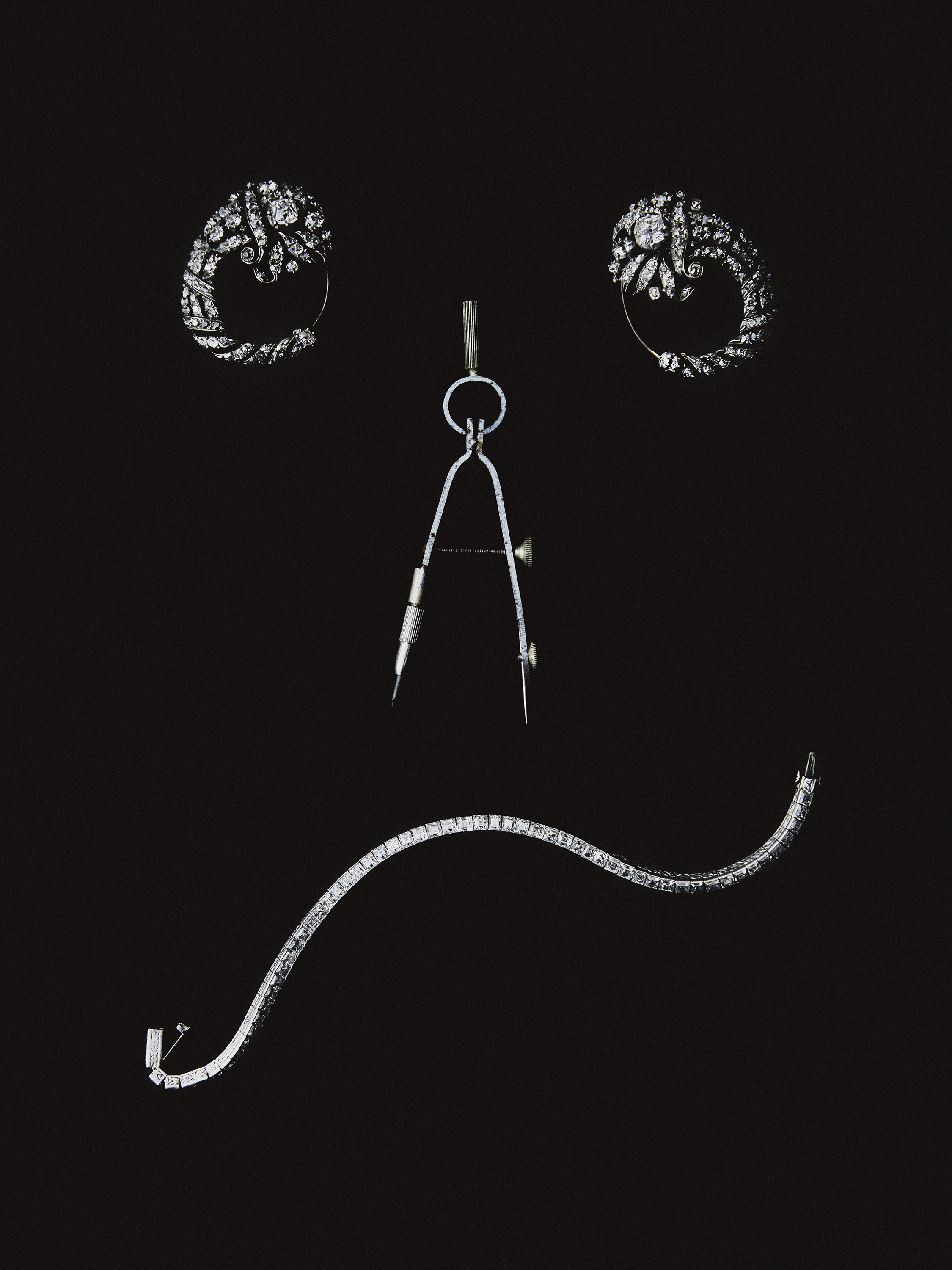Pearls
Although not a mineral, the organic pearl is just as precious as the diamond, the sapphire, ruby and emerald on account of its “orient” or lustrous iridescence. Each pearl is a jewel in itself, requiring no setting, and can be worn individually as a pendant, but when strung with others into a necklace it forms one indivisible whole.
Coloured Stones
Throughout history coloured stones have never lost their desirability. For centuries they were not only sought for their beauty and rarity but for the magical and healing powers associated with them, and even today the possession of a birthstone is believed to bring good luck.
1940s & After
Art Deco jewellery broadened into more massive, less static forms modelled into thick volutes, straps, buckles, and stepped shapes which looked well with the sportive silhouettes of the time- padded shoulders, belted waists and short skirts.
Art Deco
Art Deco jewellery emerged at the 1925 Paris exhibition of Decorative Arts at which only designs independent of the European historical tradition might be shown. It was strongly geometric in character, using precious and coloured stones with black onyx, jade, amber, agate and lapis lazuli in hitherto unknown combinations.
Art Nouveau
In reaction to jewellery as a display of wealth and the uniformity of contemporary design the Arts and Crafts Society was founded by William Morris in 1887, followed by groups of goldsmiths such as Henry Wilson and C.R. Ashbee working independently for a clientèle drawn from the intelligentsia.









